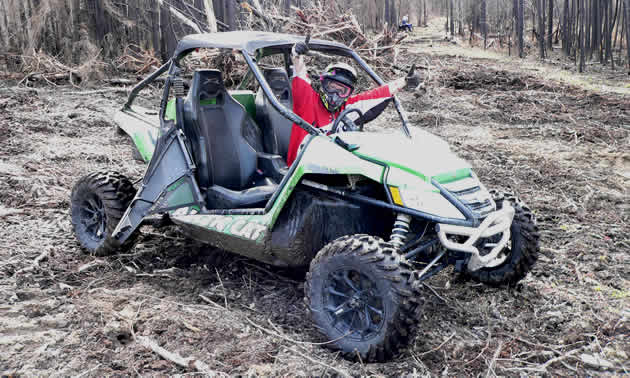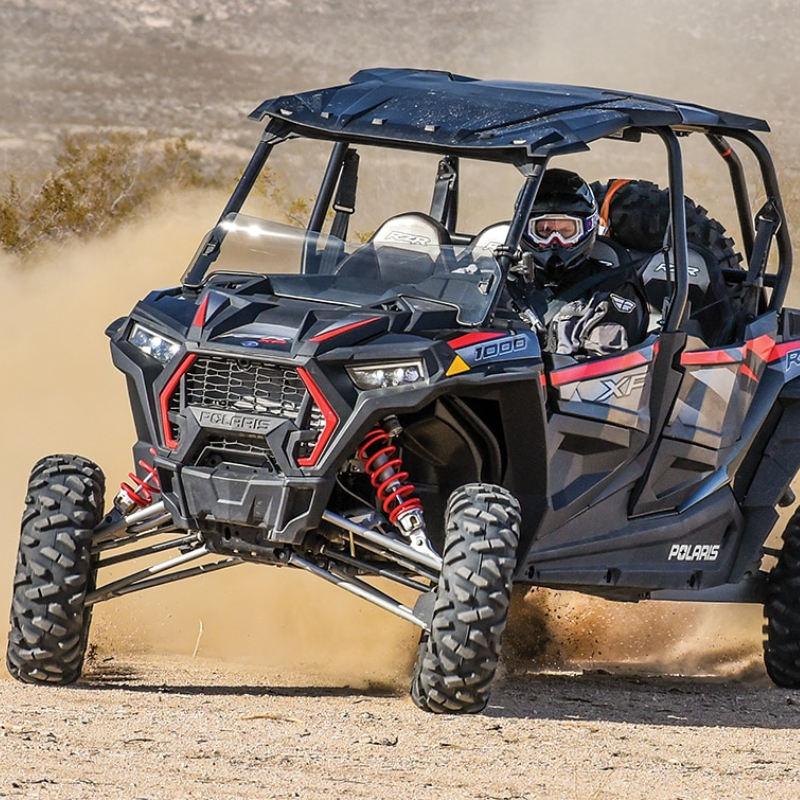With more consumers than ever buying UTVs, competition in this sector of the off-road vehicle market is really heating up.
UTVs—which are commonly known as side-by-sides (SxS)—have evolved in the last decade from the original utility-based workhorse to a new breed of sport-oriented machines. Some of the major manufacturers have even tried marrying the two, creating a machine that can accommodate both work and play needs, because, well, farmers like to have fun too.
Although farmers and ranchers still represent a big chunk of the consumer market for UTVs, it’s obviously the recreationists who are fuelling the demands for these sport-oriented vehicles we see arriving on the market. And for model year 2014, there’s a whole slew of them to talk about. Before we do, though, let’s see what random dealers in Western Canada have to say about the rising popularity of side-by-sides.
Making the switch
At Cervus Equipment (formerly Agro Equipment)—a Polaris and John Deere dealership in Cranbrook, B.C.—side-by-sides outsold ATVs two to one in 2012, and according to Terry Low, who is the sales manager there, it will be the same for this year.
“What’s happening is people are going from the two-up quads to a SxS,” he said.
Low said comfort is a big reason why riders are making the switch.
“If you’ve doubled on a quad, whether it’s a two-up or not, and you wear helmets, your helmets are constantly knocking together,” said Low. “And that back person is trying to look around and see where they are going. The person on the front and back aren’t necessarily as comfortable as they would be if they were sitting shoulder-to-shoulder.”
Then there are the safety features and storage options.
“Polaris has what’s called a certified Roll-Over Protection System (ROPS)—so that means the roll cage won’t crush under its own weight—as well as seatbelts and grab bars so the passenger that didn’t really like riding on the back (of a quad) feels much more comfortable.”
Most of Low’s SxS customers are couples in the 40 to 60 age group.
“A lot of them are couples or couples with one or two kids,” he said.
Is bigger better?
It’s a somewhat different story at FFun Motor Sports, a Can-Am and Kawasaki SxS dealer in Saskatoon, Saskatchewan. According to sales rep Kevin Hanchuk, 90 per cent of his customers are in the 25 to 30 age demographic, and most of them still prefer quads to side-by-sides.
“It depends on the time of year, but quads still have a bit of a lead (in sales),” said Hanchuk. “Side-by-sides are growing, but there still are certain things you can’t do with them.”
Although it’s not the case with all brands, Hanchuk pointed out that many of today’s side-by-sides are too wide to fit into the back of a truck, so it is necessary for owners to have a trailer or a truck deck in order to haul them.
Hanchuk said those who are looking to buy a SxS should also consider where they are going to ride. Some trails, and more so in the U.S. than Western Canada, do not allow vehicles over 50 inches wide. Even if there are no restrictions in your area, a SxS may not be able to fit down the same trails as an ATV would.
Custom appeal
Cameron Appleton, a sales rep at Argyll Motor Sports in Edmonton, Alberta, sells Yamaha and Arctic Cat side-by-sides, and he believes that comfort and options are what attract customers to side-by-sides.
“The comfort is a big thing,” he said. “You do stay cleaner and drier in a SxS than on a quad. And I just think that you can outfit them differently, with the stereo options and things like that.”
Windshields, roofs and winches are popular accessories, but the list of aftermarket products for side-by-sides is virtually endless.
Although Appleton said SxS sales have increased, he still sees more ATVs leaving the showroom floor.
“I would say four to five quads for every SxS,” he said.
Of course, it all depends on a dealer’s location and product line, but all three industry insiders agree that side-by-side sales will continue growing. Whether it will eventually surpass ATV sales on a Canada-wide scale is something that only time will tell. What we do know is that the SxS market is hot right now, and it looks like all the major manufacturers—Polaris, Arctic Cat, Yamaha, Kawasaki, Can-Am and Honda—want a piece of the pie.
Side-by-sides versus ATVs?
Whether side-by-sides (SxS) are better than ATVs or vice versa is a highly debatable topic. It depends largely on personal preference and rider requirements. We asked riders for their thoughts on owning a SxS and here are the results.
Pros:
- It’s more comfortable for two people.
- It comes with safety features, such as seatbelts and a full roll cage.
- Is highly customizable.
- It comes with a box for hauling extra gear.
- It can be less expensive than buying two ATVs.
Cons:
- Depending on the model, it may not fit in the back of a pickup truck.
- There are fewer choices on the market than ATVs.
- It comes with a higher price tag than one ATV.
- It may be too wide for some trails.
What are your thoughts? Comment using Facebook at the end of this article.








Comments